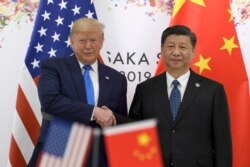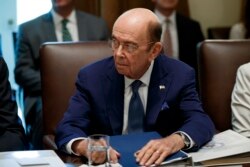SINGAPORE/WASHINGTON — The U.S. Commerce Department is expected to extend a reprieve given to Huawei Technologies that permits the Chinese firm to buy supplies from U.S. companies so that it can service existing customers, two sources familiar with the situation said.
The “temporary general license” will be extended for Huawei for 90 days, the sources said.
Commerce initially allowed Huawei to purchase some American-made goods in May shortly after blacklisting the company in a move aimed at minimizing disruption for its customers, many of which operate networks in rural America.
An extension will renew an agreement set to lapse Aug. 19, continuing the Chinese company’s ability to maintain existing telecommunications networks and provide software updates to Huawei handsets.
The situation surrounding the license, which has become a key bargaining chip for the United States in its trade negotiations with China, remains fluid and the decision to continue the Huawei reprieve could change ahead of the Monday deadline, the sources said.
U.S. President Donald Trump and Chinese President Xi Jinping are expected to discuss Huawei in a call this weekend, one of the sources said.
Huawei did not have an immediate comment. China’s foreign ministry did not immediately respond to a faxed request for comment.
When the Commerce Department blocked Huawei from buying U.S. goods earlier this year, it was seen as a major escalation in the trade war between the world’s two top economies.
The U.S. government blacklisted Huawei alleging the Chinese company is involved in activities contrary to national security or foreign policy interests.
As an example, the blacklisting order cited a criminal case pending against the company in federal court, over allegations Huawei violated U.S. sanctions against Iran. Huawei has pleaded not guilty in the case.
The order noted that the indictment also accused Huawei of “deceptive and obstructive acts.”
At the same time the United States says Huawei’s smartphones and network equipment could be used by China to spy on Americans, allegations the company has repeatedly denied.
The world’s largest telecommunications equipment maker is still prohibited from buying American parts and components to manufacture new products without additional special licenses.
Many Huawei suppliers have requested the special licenses to sell to the firm. Commerce Secretary Wilbur Ross told reporters late last month he had received more than 50 applications, and that he expected to receive more.
Out of $70 billion that Huawei spent buying components in 2018, about $11 billion went to U.S. firms including Qualcomm, Intel and Micron Technology.
The Commerce Department late Friday declined to comment, referring to Ross’ comments to CNBC television earlier this week in which he said the existing licenses were in effect until Monday.
Asked if they would be extended he said: “On Monday I’ll be happy to update you.”












